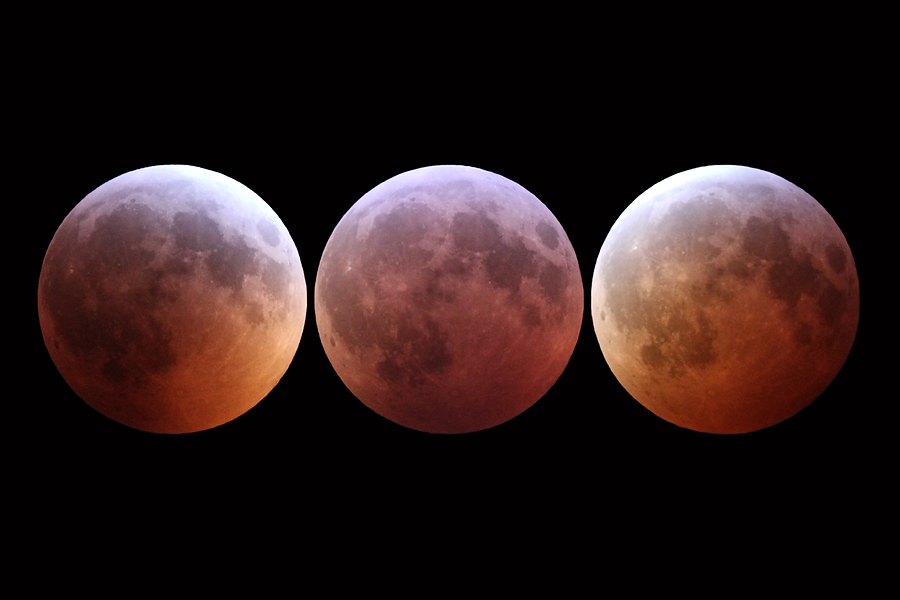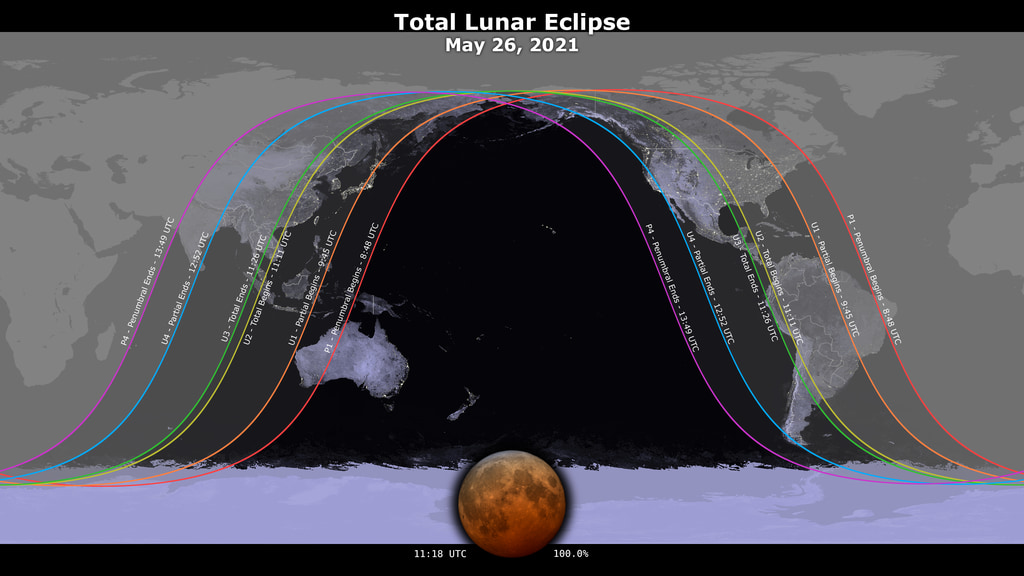Super Flower Blood Moon 2021: Here's how to photograph the total lunar eclipse
The Super Flower Blood Moon eclipse on Wednesday (May 26) won't stick around long, so if you want to capture photographs of the celestial spectacle, you'll want to plan ahead.
Whether you'll be using your cell phone or a standalone camera to photograph the eclipse, NASA has some tips for getting the so-called blood moon to really shine in your photographs. The agency's first tip is simple: practice. Consider going out early and taking some time before the lunar eclipse begins to photograph the full moon in its normal silvery hue and get a sense of what your images will look like.
You'll also want to consider how you frame your shot. "Look for foreground objects to frame the moon, give context, or add to the design of your image," NASA advises. NASA photographer Bill Ingalls has told Space.com in the past to use tools like Google Maps and compasses to scout out your location in advance and prepare your shot.
Super Flower Blood Moon 2021: Where & when to see the supermoon eclipse
Webcast info: How to watch the supermoon eclipse of 2021 online

If you take a photo of the 2021 total lunar eclipse let us know! You can send images and comments to spacephotos@space.com.
From there, the best approach will depend on your equipment, according to NASA.
If you're using the camera built into your cell phone, you'll want to first stabilize the device, ideally with a tripod (but if you don't have one, you can prop it up on something else to anchor the phone). If your phone includes a photo timer, the agency also recommends using that feature to avoid moving the camera when you snap the image.
You should also make sure your flash is off and the camera is focused on the moon itself, not the sky around it. Reducing the brightness in your settings can additionally sharpen the moon's features in a photograph. The moon should look gray, not white, the agency notes.
Breaking space news, the latest updates on rocket launches, skywatching events and more!
If your phone allows you to adjust additional settings, try reducing the ISO, increasing the aperture or f-stop to a wider setting, and perhaps even increasing the shutter speed as well.
Related: How to photograph a total lunar eclipse (a moon photo guide)
With a standalone camera, whether it shoots film or digital, you'll want to take similar steps to optimize your eclipse photography, but with a separate camera you'll be able to tune the camera's settings in much more detail.
As with a cell phone camera, ISO, aperture or f-stop and shutter speed are the key settings to adjust. But you'll need to balance all three factors carefully, just as with any photography, to achieve the particular visual effects you want. This image gallery with camera details can give you a sense of how the settings interact.
But if you're looking for some settings to start with, moon photographers often recommend using what's dubbed the "Looney 11" rule: set the camera's aperture to f/11, then match the ISO and exposure time — for example, start at ISO 100 and exposure time 1/100, then try ISO 200 and exposure time 1/200.
Lastly, remember that time is crucial for this lunar eclipse: totality will last only about 15 minutes.
Good luck!
Editor's note: If you capture an amazing photo of the eclipse and would like to share it with Space.com for a story or gallery, send images and comments spacephotos@space.com.
Email Meghan Bartels at mbartels@space.com or follow her on Twitter @meghanbartels. Follow us on Twitter @Spacedotcom and on Facebook.

Meghan is a senior writer at Space.com and has more than five years' experience as a science journalist based in New York City. She joined Space.com in July 2018, with previous writing published in outlets including Newsweek and Audubon. Meghan earned an MA in science journalism from New York University and a BA in classics from Georgetown University, and in her free time she enjoys reading and visiting museums. Follow her on Twitter at @meghanbartels.

